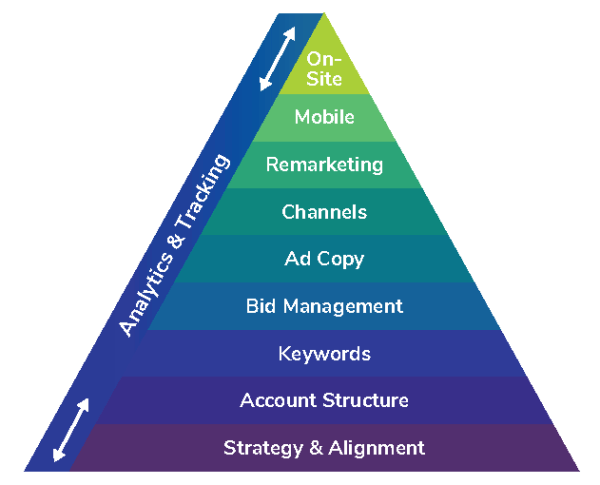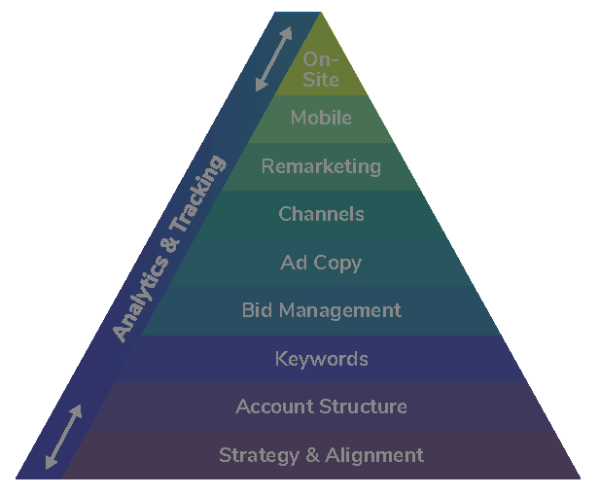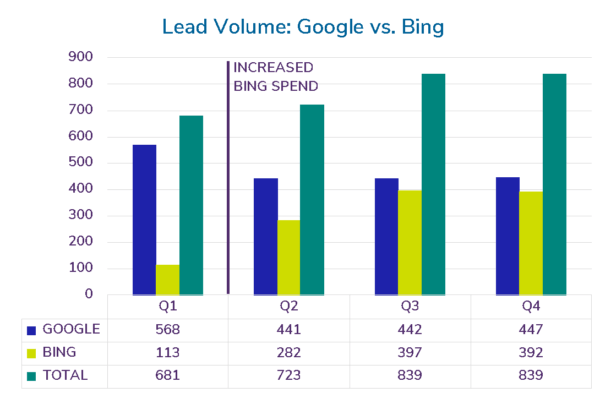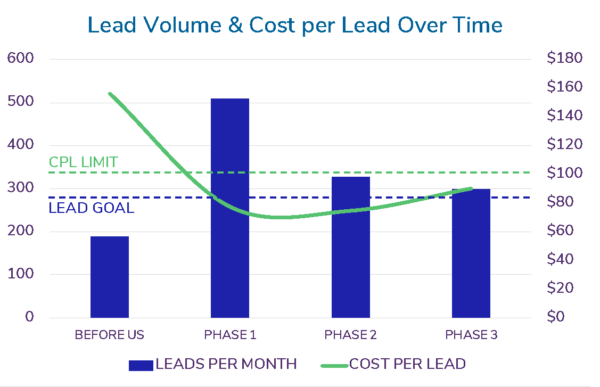Paid Media for a Property Developer: Breaking New Ground
The complete story of how we helped leverage the potential of paid media for a property developer, through rebuilt accounts, new channels and remarketing
Tried managing their own paid media advertising, but found the results weren’t worth the time, money, or effort, especially for their long, complex sales cycle
Rebuild paid media accounts for maximum effectiveness and efficiency, combine smart strategy with granular management of paid media tactics, and pursue new channels and remarketing
A property developer approached us about getting the most out of paid media advertising. They had created and managed some paid search accounts, with lackluster results, but still believed in the untapped potential of that channel.
At the time, very few of their competitors were using paid search; most of the marketing was offline, in the form of billboards and traditional media, such as newspaper and radio ads. Paid search wasn’t seen as a good fit for that industry, which has one of the longest and most complex sales cycles in B2C.
However, as they sensed and as we knew, paid search can be a strong channel for many industries, including theirs. Through our expertise and detail-oriented, high-touch account management, paid search proved to be one of the highest-ROI channels for this client. This is how we did it, step by step.
Audit
The client engagement began with an in-depth audit of their paid search efforts to date. Our team identified the most critical opportunities and presented our plan for implementing them to improve performance.
Our audit is both a granular account examination and a high-level study of strategy, goals, and bottom-line results. Through our years of experience and expertise, we have developed a model of an ideal paid search approach:

- Clear strategy aligned with business goals
- Campaigns and ad groups split into logical, thematic groups
- Correct management of negative and long-tail keywords
- Average Quality Score of at least 7.0
- Regular bid optimization
- Strong, clear messaging and calls to action (CTAs) in ad copy
- Proper leveraging of additional channels (social, shopping, etc.)
- A cohesive mobile strategy
- Remarketing tailored to user actions or buying funnel
- Landing pages with clear paths and consistent messaging
- Analytics goals consistent with paid search conversions
Audit results
We discovered that this client’s search marketing was not living up to its potential, which had significant impacts on the business as a whole. Not only was this client’s account suffering structurally and in day-to-day management, it had no connection to the company’s mission and goals, and was thus more of a cost center than the revenue-driving channel that paid search can and should be.
 Paid media efforts were not aligned with business goals
Paid media efforts were not aligned with business goals- No clear paid search strategy
- Campaigns and ad groups weren’t properly segmented
- Average Quality Score of 5.5 meant higher bid prices
- Misuse of negative keywords
- Bids not optimized regularly
- Ad copy lacked clear CTAs
- No regular testing of new channels or tactics
- Company wasn’t using remarketing
- No clear strategy for mobile
- Landing pages lacked consistent messaging and compelling CTAs
- Missing historical performance data made long-term analysis impossible
- Incorrect analytics setup
Strategies for improvement
After determining the state of our client’s digital marketing, we created a 3-phase improvement plan:
- Phase 1 would deliver short-term fixes with visible results in the first 3 months
- Phase 2 would focus on account structure and management, including match type and segmentation, in months 3-6
- Phase 3 would expand the reach, power and capacity of the client’s paid search by testing new channels, including remarketing and mobile; this phase is still ongoing because optimization never truly stops
Phase 1: Immediate Fixes
During the first phase of our engagement, we used a sort of triage approach: fixing what needed to be fixed to stabilize the account and making simple improvements that yielded significant returns.
Stabilize the account
Ensure correct tracking
The first crucial task was ensuring that from there on out, all data was correctly measured and attributed across advertising, analytics and revenue platforms. This way, the results of future actions could be evaluated on an “apples to apples” basis.
Negative keywords
We blocked keywords relating to almost 400 locations that didn’t apply to the client’s offerings. These negative keywords were responsible for $147,746 in advertising spend in the previous year, producing low-quality leads with a cost per conversion that was nearly double the client’s goal.
Deliver quick results
Dayparting
One of the simplest aspects of the client’s account to optimize was time, specifically the days and times to maximize bids so searchers were more likely to see the client’s ads. We analyzed the previous 4 months of data and found several “hot spots” in the weekly calendar: noon on Sunday, Monday morning, Friday afternoon/evening and early Saturday afternoon. We increased bids for high-performing ad groups at those times to get maximum exposure when searchers were in ready to investigate our client’s offering.
Manual bid adjustments
Many agencies use automatic bid adjustment tools to manage paid search spending, allowing them to take on many clients but not to achieve the best possible results. We use our human intelligence, years of expertise and attention to detail to manage paid search spend on a granular level.
Applying this level of care to the client’s account allowed us to achieve a 36% reduction in costs per click and an 84% increase in the conversion rate.

Phase 2: Account Rebuild
During Phase 2, we rebuilt the client’s paid search accounts. (The client owned many property groups, all of which had their own accounts.) The entire process took 10 weeks, because of the level of detail we put into each account, building it right so it could generate long-term sustainable growth.
Account rebuild strategies
What makes our account rebuild so powerful? The ways we apply human intelligence to data and focus on the details:
- Leveraging search traffic data to determine top-priority keywords
- Using match types intelligently to maximize efficiency and reduce costs
- Customizing ad copy for each audience to maximize conversions
- Optimizing bidding for maximum visibility of low-funnel terms
- Applying searcher-intent best practices to all ads at every level
- Strategically rebuilding remarketing campaigns to align messaging with searcher intent
Account rebuild results
 During those 10 weeks, we rebuilt many accounts for the client (each property the client owned had its own account). The results shown here were typical for an account rebuild.
During those 10 weeks, we rebuilt many accounts for the client (each property the client owned had its own account). The results shown here were typical for an account rebuild.
- Conversion rate grew by 61%
- Cost per conversion decreased by 41%
- Cost per click decreased by 5%
- Click-through rate more than doubled, growing by 153%
- Overall, the ratio of conversions to impressions more than quadrupled
Our proven way of structuring and organizing paid search campaigns has consistently delivered similar results for all our clients: conversion rates go up, cost per conversion goes down, and the account starts delivering leads, customers, and revenue much more efficiently.
Phase 3: Testing New Channels
 The client had put all its paid search eggs into one Google-shaped basket. However, we found additional channels that yielded better results because they were preferred by the company’s target audience.
The client had put all its paid search eggs into one Google-shaped basket. However, we found additional channels that yielded better results because they were preferred by the company’s target audience.
Because we took the time to understand our client’s business, customers and goals, we were able to identify a channel—Bing—with a much higher proportion of the company’s target market than Google.
We shifted our strategic focus to Bing, adjusted spend accordingly and saw these results:
- Customized messaging for Bing users resulted in a higher conversion rate and lower cost per lead than Google
- A downloadable asset aimed at the Bing audience drove some of the highest conversion rates in the entire paid search portfolio
- Total lead volume grew by 23% in 2 quarters
Phase 3: Remarketing
By using Google Remarketing, we boosted leads and drove average cost per conversion down. But we saw even greater results when we tied a content asset—a Buyers’ Guide—to remarketing.
The Buyers’ Guide was introduced on Oct. 20, but contributed almost half of the remarketing leads for that whole month. In November and December, it completely dominated remarketing leads.
The cost per lead (CPL) is always relatively low for remarketing, and the Buyers’ Guide campaign was no exception, with its CPL consistently coming in at almost half the normal CPL for all search advertising.
Conversion rates for the Buyers’ Guide campaign were comparable with the overall Search account, at 1.27% and 1.28%, respectively.

Overall Results
 When we began our engagement with this client, they set ambitious goals:
When we began our engagement with this client, they set ambitious goals:
- 30% reduction in daily advertising spend
- 36% reduction in cost per lead
- 48% increase in leads
We welcomed the challenge, applying our philosophy, team strengths, and best practices. As always, they worked: we achieved or exceeded all these goals, and have done so for several years now.
By applying a combination of refined best practices, a data-based approach and strategic partnership with our client, we affirmed their perception that paid search was not only a viable channel for lead generation, but also a strong, scalable one.
In 12 months of our engagement, paid search resulted in 103 tours, at an average cost of $1,283, and 33 sales, at an average cost of $4,003. As the average purchase price was between $400,000 and $500,000, paid search turned out to be a high-ROI channel for this client.
Takeaways
These results didn’t come from just using a tool or from adjusting some campaign settings and merely monitoring the results. Instead, they’re a natural development from our philosophy regarding digital marketing, especially these aspects:
Autopilot is not an option:
If you let a tool or platform control your search marketing, it’s bound to make decisions about your spend that won’t benefit you. It’s always best to have human intelligence in charge.
Prioritize the performers:
Maximize the highest-performing elements first, as they’ll deliver results to the bottom line soonest. Once they’ve reached their highest performance point, start increasing spend on lower-performing elements, while experimenting on how to improve their performance.
Always be testing and optimizing:
Never settle for “good enough” or “what worked before.” Keep seeking ways to improve performance, remove friction from the buying process and introduce beneficial innovations.

